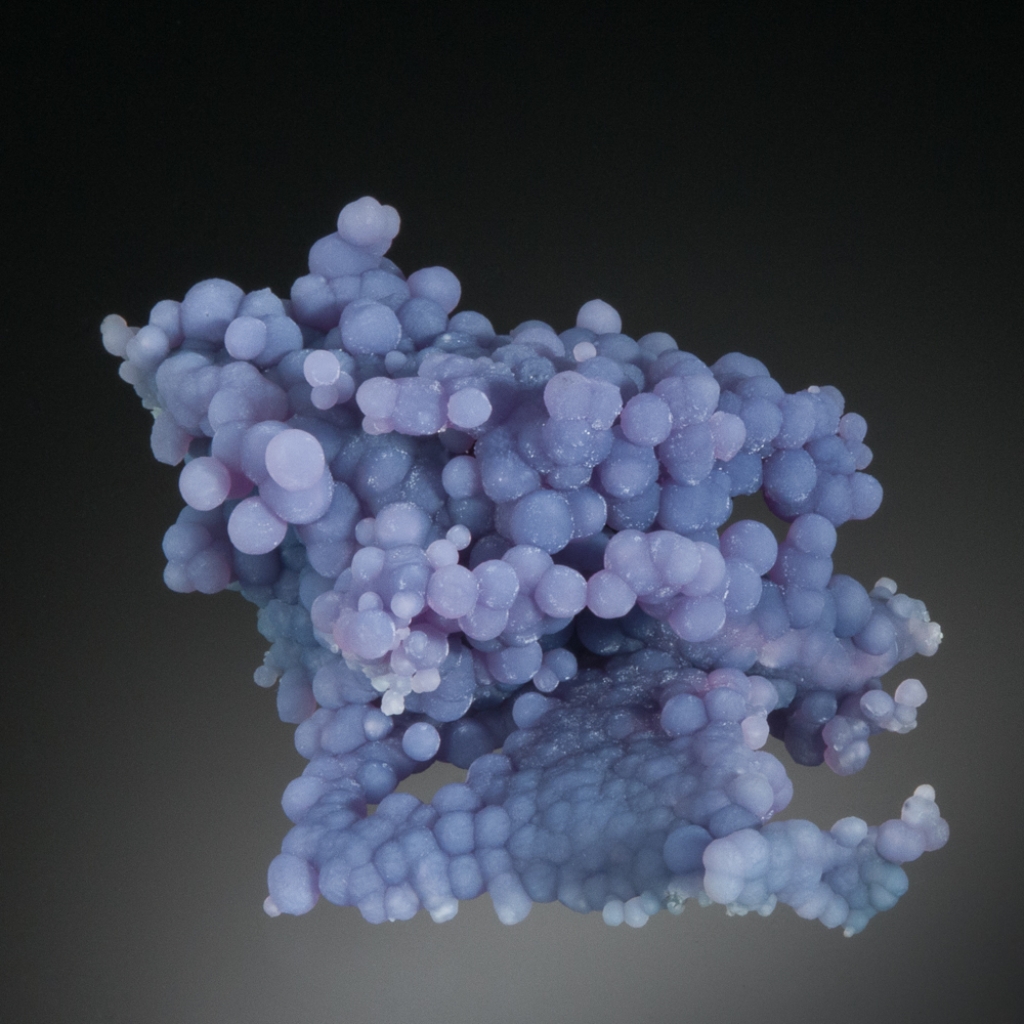Description
Detailed Description
This remarkable specimen is a floater, with no point of attachment. It is very three-dimensional, with a thin curtain down at the base and a beautiful larger cluster comprising the majority of the piece. Nice lilac colour, and the lustre varies, from matte to a band of silky balls across the centre. The back of the specimen includes some green colour due to included celadonite. An interesting note, as I was acquiring this piece, someone asked the seller about acquiring it for a major museum. In excellent condition – I can’t find any incomplete balls, which is unbelievable for this material – just super. A truly great specimen.
Browse More “Grape Amethyst” from Indonesia (click here)
About These Indonesian “Grape Amethyst” Specimens
Originally referred to as “grape agate”, specimens were first found in the Mamuju area in 2015. These specimens are recovered from clay, in the spaces between the “pillows” in pillow lava. Although they were first known as “grape agate”, they are not cryptocrystalline (and therefore are not agate) – they are balls of radiating crystalline quartz. When the find first came to market, there was a large amount of material, much of which was poor quality. With the passage of time, the diggers began to produce higher quality specimens. The recent article on this material in the Mineralogical Record (Nov-Dec. 2018) observes that the production of fine specimens is beginning to decline, although there are still a few very active teams working the deposits. The article speculates, based upon local sources, that all specimen mining of the pillow lava deposits will likely cease within the next three to four years. As with all mineral specimen localities, the ultimate accuracy of such speculation varies. In this case, the limited geographical extent of the known pillow lava deposits is a key factor.


